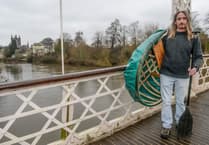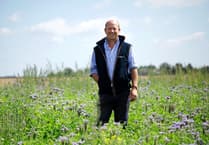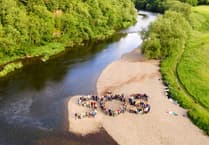Even if you rent a flat or house, you can still create a welcoming haven for wonderful wildlife visitors.
The first step is to access what is already in place to provide the best opportunities for different wildlife creatures, such as pollinators, insects and small mammals, to access food, shelter and water.
This can be easily done by carrying out a little survey of the space and noting down what plants are already in place, such as annual or perennial flowers, shrubs and trees.
When you first move into a new home, rented or owned, it can take a whole growing year to be able to access what plants are already there and when they flower and produce fruit. But there is still plenty you can do while you are discovering the wonders that await you in your space.
If you have a blank canvas to start with or you are not sure what might look nice in the face, then do some research online. Perhaps even create a space to look and how you would like it to make you feel. For example, you might want a garden or balcony that is vibrant, with bright oranges and reds to reflect energy. So, search for a range or brightly coloured flowers and shrubs, that will provide that mood throughout the year, while also providing food and shelter for wildlife.
If you have a lawn, consider what you need it for, such as children to play on it. If it isn’t going to be used heavily, then creating a grass-free lawn, using plants like clover, or having an area you plant with wildflowers and leave unmoved for the majority of the year, will make those green spaces much more interesting and better for wildlife.
Lastly, consider what else you can add to the environment that will provide a habitat and shelter, such as bird or bat boxes or a safe space for providing supplementary food, such as bird boxes or hedgehog feeding stations. Also, lets not forget that you want to be able to enjoy the space, too if you don’t already have garden furniture, then this is the perfect time to think about what would fit in the area to help you to relax and enjoy the outdoors, and fo course, you can take these items with you when you move on.
Now you have your plan and you should know what you would like to create in the space, for example, what will be permanent, like shrubs and tress and perennial plants and what items are more moveable such as pots, containers and herbaceous plants.
Then it’s time to speak with the owner of the property or their managing agents and explain what you are trying to achieve and why.
Being able to provide a plan, with a list of the plants and wildlife features you would like to add, will make it easier for them to know how these ideas might enhance their property in the future. It will also help to reassure them that you have considered things like the potential impact on neighbours and how this new wildlife garden will be maintained when you move on.
When you come to implement your plan, then it’s time to think about preserving the soil and reducing the negative impact on the environment, such as using peat-free (and where possible, organic) compost.
In addition, using no-dig gardening method help to create healthy soil and also reduce the amount of trapped carbon dioxide released into the atmosphere.
Now, sit back, enjoy your wonderful wildlife space and watch as butterflies, moths and lots of other insects and creatures come to visit, knowing that when the time comes to move on, you will be leaving those little visitors with plenty of food, shelter and water, ready for the next occupants of the home to support and enjoy as well.





Comments
This article has no comments yet. Be the first to leave a comment.